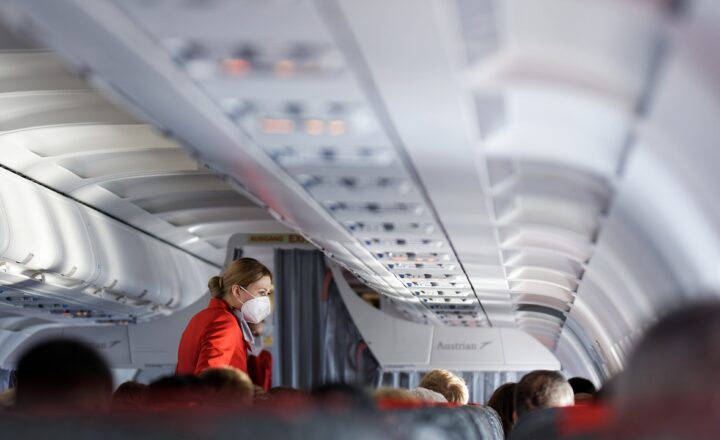Flying High: The Surprising Facts About Life as a Commercial Airline Pilot
November 14, 2024

Becoming a commercial airline pilot is a dream for many, but the path to the cockpit is filled with challenges, rewards, and surprising realities. Many people fantasize about the idea of flying a plane, travelling the world, and living an adventurous life. However, the day-to-day life of an airline pilot is often more complex and demanding than it appears on the surface. In this article, we’ll explore the intricacies of being a commercial airline pilot, ranging from the training required to the lifestyle, perks, and challenges faced in this high-flying profession.
1. The Journey to the Cockpit: Training and Qualifications
To become a commercial airline pilot, individuals must undergo extensive training and pass several licensing requirements. Here’s a typical path aspiring pilots follow:
- Education: While a formal college degree is not strictly required, most airlines prefer candidates with a bachelor’s degree. Many pilots opt for degrees in aviation, aeronautical engineering, or related fields.
- Flight Training: Obtaining a Private Pilot License (PPL) is the first significant step, followed by the Instrument Rating (IR) and Commercial Pilot License (CPL). Additional training includes obtaining an Airline Transport Pilot (ATP) license, which is mandatory for flying as a captain for airlines.
- Hours of Flight Experience: Airlines often require a minimum of 1,500 flight hours to qualify for entry-level positions, often acquired through flight schools and instructing.
- Medical Certification: Pilots must pass regular medical evaluations to ensure they meet health and vision standards set by aviation authorities.
The rigorous training ensures that only highly skilled individuals are entrusted with the safety of passengers and crew.
2. The Daily Life of an Airline Pilot
Contrary to popular belief, airline pilots do not simply show up for a flight and take off. Their routines are often structured and vary each day:
- Crew Briefings: Before each flight, pilots attend pre-flight briefings with co-pilots and other crew members to discuss flight paths, weather conditions, and operational updates. This is a critical step to ensure comprehensive safety awareness and communication.
- Flight Preparation: Pilots are responsible for inspecting the aircraft documentation, reviewing weather forecasts, checking fuel requirements, and calculating flight times. Inspections of all cockpit instruments and controls are also conducted, ensuring the aircraft is ready for flight.
- Flying the Plane: During the flight, pilots manage navigation, monitor systems, and communicate with air traffic control (ATC). They must remain alert and ready to handle unexpected changes, such as weather alterations or technical issues.
- Post-Flight Duties: After landing, pilots complete post-flight checks and document any discrepancies encountered during the flight. They may also attend debriefings where they discuss flight performance with other crew members.
The life of a pilot is demanding, often requiring long hours, quick decision-making, and the ability to remain calm under pressure.
3. The Lifestyle of a Commercial Pilot
The lifestyle of a commercial pilot can be both rewarding and challenging:
- Travel Opportunities: One of the primary perks of being a pilot is the opportunity to travel extensively. Many pilots enjoy the chance to explore new cities and cultures during layovers, often allowing them to experience the world in ways that many only dream of.
- Work-Life Balance: Pilots typically work variable schedules, including weekends and holidays. While this can lead to extended time away from home, it may also create longer periods of downtime between flights. Pilots often take advantage of this time to recharge or spend time with their families.
- Health Considerations: The unpredictable schedule, combined with the stress of flying, can lead to health challenges. Pilots must maintain a healthy lifestyle, including regular exercise and balanced nutrition, to meet the physical demands of their job and pass regular medical evaluations.
While glamourized in movies and media, the reality of a pilot’s lifestyle involves dedication, discipline, and adaptability.
4. The Realities of Being a Pilot: Misconceptions and Challenges
Despite the romantic notions of flying, several misconceptions surround the profession:
- Common Misconception – Pilots Are Always Relaxed: The truth is, pilots face high levels of responsibility, long hours, and the mental fatigue associated with navigating stressful situations.
- Common Misconception – Being a Pilot Is Cheap and Easy: The journey to becoming a pilot is costly and time-consuming, often requiring significant investment in training and flight hours.
- Common Misconception – Pilots Make a Lot of Money Immediately: While pilots can earn substantial salaries, pay scales vary widely based on the airline, experience, and aircraft type. Most pilots start with modest salaries, gradually increasing as they gain experience and seniority.
Moreover, the airline industry can be cyclical, with economic downturns affecting job stability. Pilots must be prepared for the psychological impact of layoffs or furloughs during these turbulent times.
5. Safety First: The Essential Role of a Pilot
Safety is the cornerstone of aviation, and pilots play a critical role in ensuring secure flights:
- Continuous Training: Pilots participate in regular training programs that include simulator sessions to prepare for emergency scenarios, ensuring that they remain adept at managing outliers that could endanger safety.
- Communication Skills: Effective communication is crucial, not only with co-pilots and cabin crew but also with passengers during turbulent conditions. Pilots must maintain a calm demeanor to reassure and guide passengers.
- Decision-Making Skills: Quick and decisive judgment is essential, especially in adverse situations. Aviation training equips pilots with skills to weigh risks and choose the best course of action under pressure.
The essence of being a pilot lies in commitment to safety, where stressful situations become opportunities to exercise judgment and experience.
Conclusion
Life as a commercial airline pilot is filled with surprises, challenges, and rewards. While the allure of flying high may seem glamorous, pilots undergo rigorous training, maintain a demanding schedule, and must constantly adapt to changes in their profession. For those who are passionate about aviation and dedicated to ensuring the safety of others, a career as a commercial airline pilot can be one of the most fulfilling paths imaginable.
Whether you are considering a career in aviation or simply interested in what lies behind the cockpit door, understanding the realities of this profession provides a more profound appreciation for those who commit to flying high.








